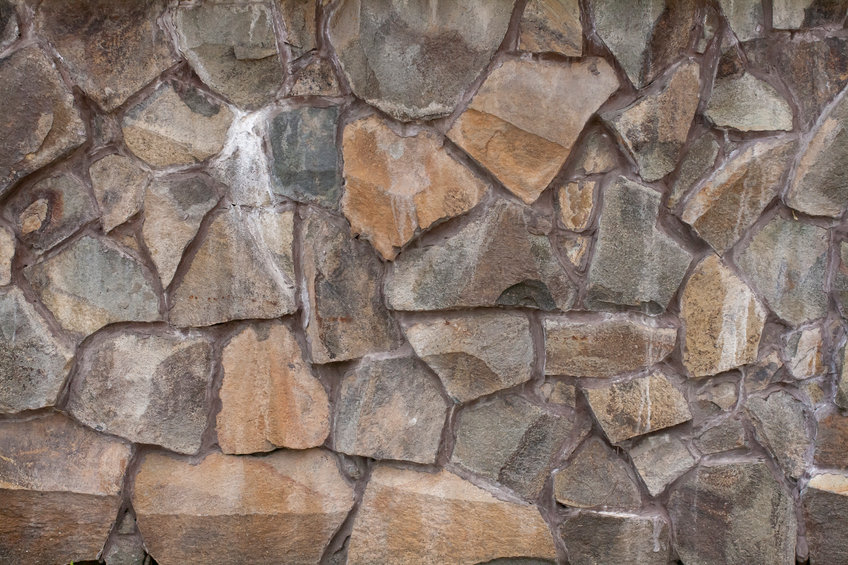Homes constructed with stone masonry are very durable and tend to last for a very long time, as they require very little maintenance.
Since stones are a naturally abundant material, they are a great choice for making sustainable home designs. This article discusses the two main classifications of masonry; ashlar masonry and rubble masonry.
- Ashlar Masonry

Ashlar masonry is formed using finely dressed stones of the same shape, size, and texture laid together at right angles to each other using lime mortar or cement of equal size joints. The size of the stone blocks used in ashlar masonry must be proportionate to the thickness of the walls.
Types of Ashlar Masonry
- Ashlar Fine Tooled Masonry
Each stone is cut into a uniform shape and size that are almost rectangular to provide perfect vertical and horizontal joints with the adjacent stones. The technique used here aims to give a smooth or fine exposed finish to the masonry. The only downside of ashlar fine masonry construction is that it tends to be very costly.
- Ashlar Rough Tooled Masonry
This type of ashlar masonry uses stones whose sides are finely chiseled to create a rough texture. A strip allowance of 25mm width is provided around the perimeter of the roughed face on each stone. This dressing aims to give a rough exposed finish to the masonry.
- Coursed Ashlar Masonry
The coursed ashlar masonry uses uniformed-sized stones that have alternating vertical joints to strengthen the wall. An ashlar mason will lay the stones in a way that covers the joints formed by the lower layer. The outer faces of the ashlar stones can be hammer-dressed or rough tooled.
- Ashlar Chamfered Masonry
In this type of ashlar masonry, the strip around the perimeter of the exposed stone surface is chamfered to a depth of 25 mm at an angle of 45 degrees. A chisel can be used to chamfer or bevel the surface to give it a bold outward appearance.
- Rock and Quarry Faced
A chisel is used to make a 25mm wide strip around the perimeter of the ashlar stone. The remaining portion of the stone surface is left in the same form as it was before. This type of ashlar masonry aims to give a natural outward appearance.
- Rubble masonry
Rubble masonry is a classification of stone masonry where the stones used in construction are either roughly dressed or left undressed. Unlike ashlar masonry, the stones used in rubble masonry do not have a uniform thickness. The strength of the rubble masonry solely relies on the using long-through stones, quality mortar, proper application between the joints and spaces.
Types of Rubble Masonry
- Coursed Rubble Masonry
The courses in this type of rubble masonry do not have the same height and use stones of different sizes. The coursed rubble masonry is commonly used in the construction of abutments, residential buildings, public buildings, and piers of ordinary bridges.
- Un-Coursed Rubble Masonry
This is probably the roughest form of stone masonry used in construction. It uses stones of varied shapes and sizes that are taken directly from the quarry as undressed stone blocks. It is further divided into random and square un-coursed rubble masonry.
- Dry Rubble Masonry
This type of masonry is performed without using mortar. The small spaces between the large stones are filled with smaller stone pieces. Dry rubble masonry is primarily used in pitching the canal slopes and earthen dams.
- Flint Rubble Masonry
A flint refers to an irregularly shaped nodule of silica that is very hard but brittle. Flint rubble masonry is used in areas where flint is widely available. The length of the flint stones can vary between 15 to 30 cm with a thickness of between 8 and 15 cm.
- Polygonal Masonry
The stones in this type of masonry are roughly shaped to form irregular polygons. The shaped stones are then arranged in a manner that they avoid vertical joints located in the face work. Stone chips can sometimes be used to offer additional support to the rubble stones.
A building structure made up of ashlar or rubble masonry requires a significant investment of both time and money. However, you cannot go wrong with the long-lasting durability and timeless beauty of stone masonry if it is done right. It is always important to involve professional masons during construction to ensure everything goes as expected.
